Nottingham University - Highfields Campus
w/e 15 April 2012
All this week's pictures were taken
with a Kodak DX6490
We have visited Highfields Park and the University
campus several times previously including a walk around the lake in 2006 followed by
two visits to view the Millennium Garden in 2010 and the Walled Garden at Highfield's House in 2011.
There are still many more gardens and open areas on the campus
worth seeing but for this visit we limited ourselves to the eastern
section (campus
map). This is probably the most built up area of the whole
campus but there are still plenty of landscaped vistas to be
enjoyed.
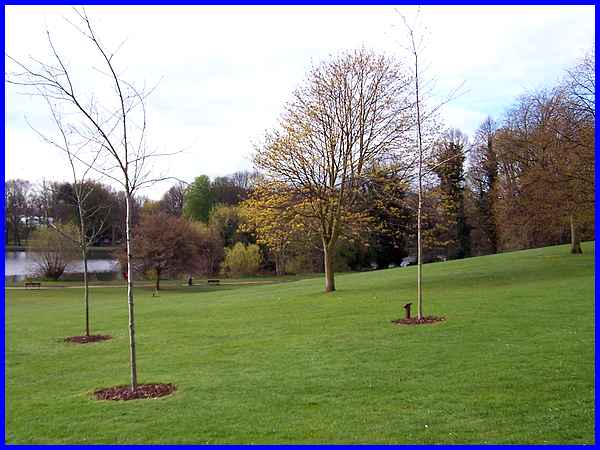
We entered the University grounds via the South Entrance and
followed the road up Portland Hill towards the Portland and Trent
Buildings that overlook Highfields Park and the lake. The wooded
area down by the lakeside is called the Portland Copse.
|
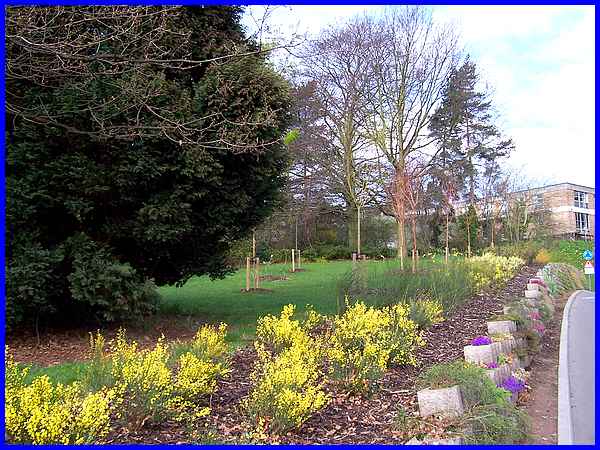
Turning right before reaching the Portland Building we continued
up the hill towards our first objective, the Old Botanic Garden
which occupies a corner plot and is marked by a colourful border.
|
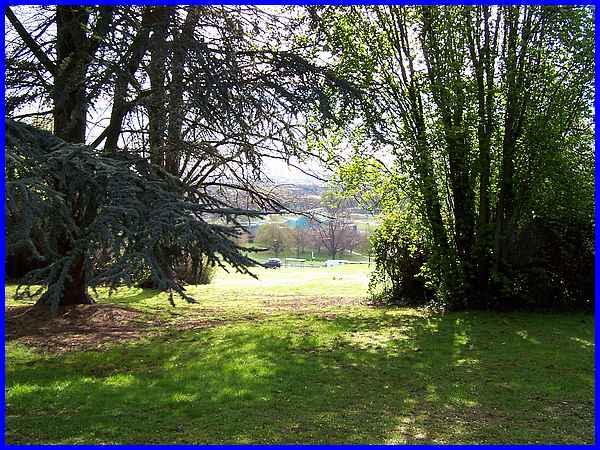
From within the Old Botanic Garden there are intermittent views
through the trees and hedges over the green roof of the Lakeside
Arts Centre to southern part of Nottingham.
|
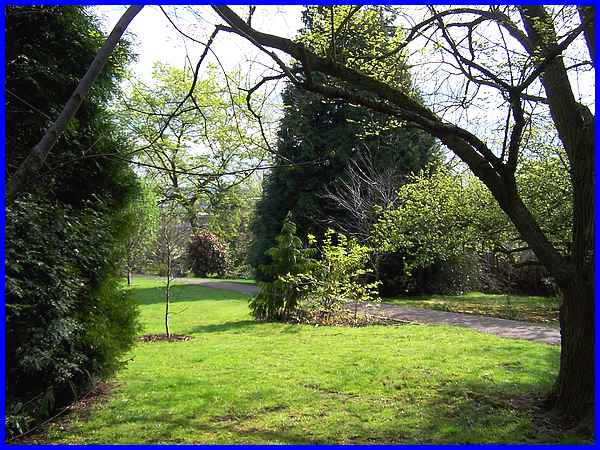
The Old Botanic Garden is a quiet retreat and originally had
formal beds representative of the Plant Kingdom although it no
longer serves as the same teaching function as it did previously
when botany was taught in a more traditional way. Although the
garden has been simplified and replanted over the years it still
contains some unusual trees and shrubs.
|
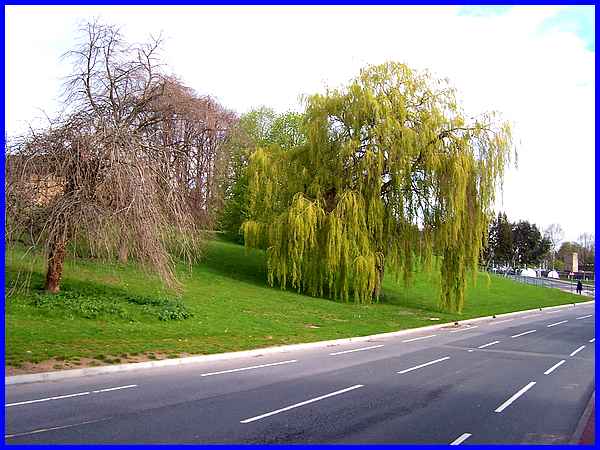
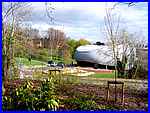 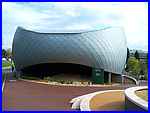 Leaving the Old
Botanic Garden we followed the road past the Keighton Auditorium
(left & right). I suppose it's a matter of opinion but I
found the unusual shape of the building quite unobtrusive but
admit its architectural style might not be to everyone's taste.
The area opposite is known as the Vale of Tears as it contains
a collection of weeping trees including specimens of birch, ash,
willow and beech. Leaving the Old
Botanic Garden we followed the road past the Keighton Auditorium
(left & right). I suppose it's a matter of opinion but I
found the unusual shape of the building quite unobtrusive but
admit its architectural style might not be to everyone's taste.
The area opposite is known as the Vale of Tears as it contains
a collection of weeping trees including specimens of birch, ash,
willow and beech.
|
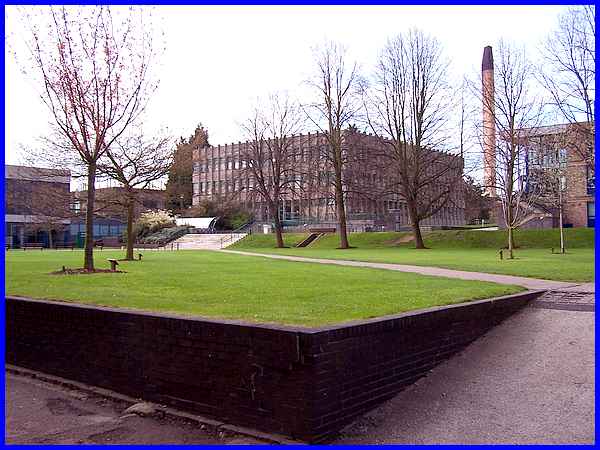
We left the road and weaved through the buildings to seek out
the Chemistry Courtyard which is surrounded by buildings of a
more uniform shape than the Auditorium. There are a number of
water features on the campus and among them "three bubbling
fountains set amongst boulders" are listed as being in this
courtyard. Unfortunately they are either very well hidden or
have subsequently been removed.
|
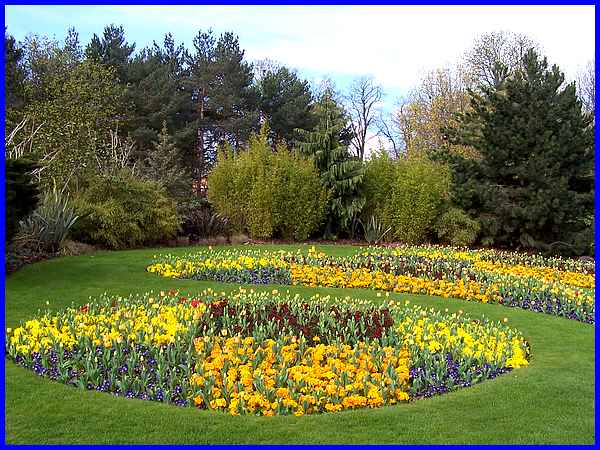
Undeterred we headed for the North Entrance where we were treated
to some of the formal flower beds that adorn the site at various
points. The beds at the North Entrance are backed by a border
of shrubs, bamboos and grasses that enhance the area all year
long and not just when the spring flowers and bedding plants
add their bright colours.
|
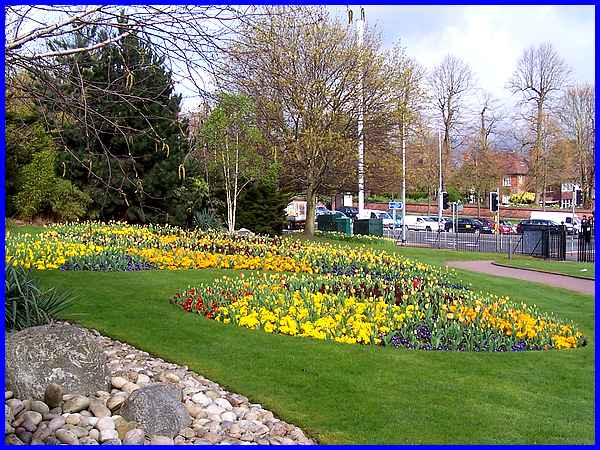
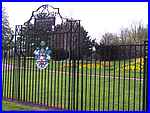 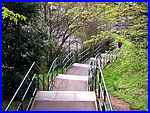 Rocks
and boulders also feature in the display but occupants of passing
vehicles have their view restricted by gates (left) bearing a
plaque that reads: "These gates were erected to the memory
of Sir William Crane Member of Court and Council of this University
1914 - 1959 Pro-Chancellor 1954 - 1959." We left this
area via a flight of steps (right) and headed for the East Entrance. Rocks
and boulders also feature in the display but occupants of passing
vehicles have their view restricted by gates (left) bearing a
plaque that reads: "These gates were erected to the memory
of Sir William Crane Member of Court and Council of this University
1914 - 1959 Pro-Chancellor 1954 - 1959." We left this
area via a flight of steps (right) and headed for the East Entrance.
|
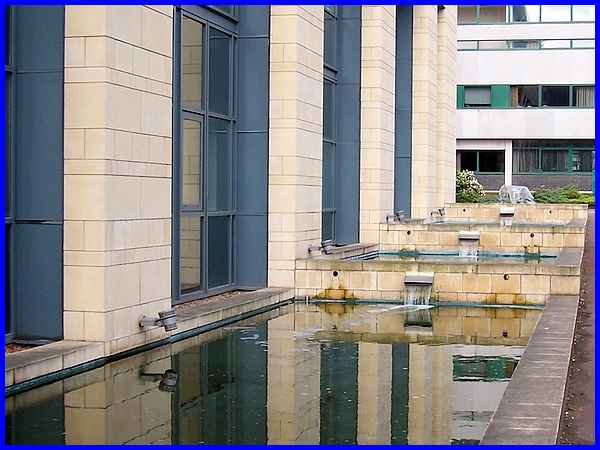
Again wending our way between the buildings through what is probably
one of the least picturesque parts of the campus we reached a
corridor of land between the busy Clifton Boulevard and the Centre
for Biomolecular Sciences outside of which we came across one
of the water features on our list of places to find. According
to the free guide available from the gate houses at the campus
entrances this consists of "three pools with cascades and
a fountain."
|
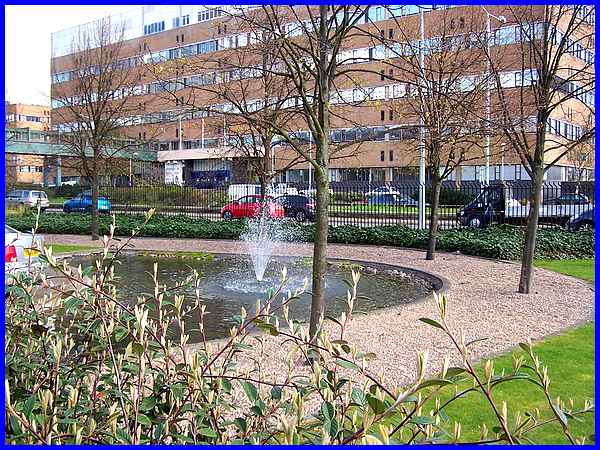
Another "formal pond with a geyser fountain" is situated
near the East Entrance. Across Clifton Boulevard is the University's
Medical School which forms part of the Queen's Medical Centre
complex or to give it its full title, the Nottingham University
Hospitals NHS Trust Queen's Medical Centre. No wonder therefore
that it is usually abbreviated to the QMC!
From here we made our way back along Science Road to the car
park at the South Entrance which means that we have left many
more places to explore on the University campus at a later date.
|

